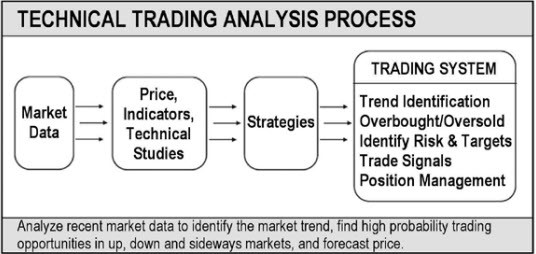Suppose you have suffered from significant losses or have a large account drawdown during market corrections or bear markets, states Chris Vermeulen of The Technical Traders.
In that case, your investing process has one or possibly two critical flaws. The brutal truth is if you can’t control these two problems, you will never experience long-term sustainable growth or avoid large drawdowns in your trading and retirement accounts. So let me tell you what they are to help you work towards correcting them.
The First Problem: It could be that you don’t have a handle on your emotions and self-discipline to follow your strategy and pull the trigger to enter, take profits, and exit trades when you should control risks and positions.
The Second Problem: Maybe you are trading without rules because you need a clearly defined strategy to follow. Having a strategy tells you when to enter a position, take profits, and, most importantly, when to exit if things go south.
The good news is that if you can resolve the second problem, which technical analysis helps do, the first problem becomes much easier to overcome.
The bad news is that only you can overcome the first problem of managing your emotions and self-discipline, which is why it’s called “self-discipline.” No one else can do this unless you have someone execute the trades for you or have a strategy auto-traded in your account, which removes you from the equation of knowing what to do and following the markets.
Mastering The Process for Profits
The technical traders flow chart below shows how market data gets processed, analyzed, managed, and traded. It is a relatively simple process, where we take the raw price data and some indicators to identify which direction the asset is moving, both from a long-term and a short-term point of view.
Once you know the direction an asset is headed, you can apply the appropriate strategy and then execute trades to profit from the asset. Depending on if you are a swing trader or an investor looking for more significant gains, you will use a different strategy.

Why Technical Analysis Helps You Succeed
Technical analysis allows us to focus strictly on price action to help put the odds in our favor. As investors, we know that we only experience account growth when the assets we own increase in value. It is only logical to focus on the price charts using technical analysis to follow and trade in the direction of assets we want to own.
This short video shows you a new way to build wealth with Single Asset Revesting, that will dramatically improve your ROI and lifestyle. I skipped ahead in this video to show you the benefits and how it works.
Technical Analysis Offers Us Many Advantages:
- Technical analysis works in any time frame.
- Technical analysis works with all assets: indexes, stocks, commodities, and currencies.
- It allows you to find low-risk and high-probability trade setups.
- It allows you to define risk and place protective stops.
- It allows you to define profit potential and set limit orders.
- Technical analysis removes the guesswork from trading, allowing you to create a simple, repeatable, rule-based system to generate a reliable ROI.
- Through technical analysis, you gain clarity on an asset trend to be sure you only own and hold positions in assets rising in value.
- Finally, technical analysis allows you to ignore news and opinions, which reduces emotional stress so you can properly execute your strategy.
Concluding Thoughts:
I am a firm believer in single-asset revesting portfolios. This is when a portfolio only owns the best asset at any given time that is rising in value, and when that asset stops rising, it revests the capital into a different asset that is rising in value.
I find that roughly 40% of the time, my active investing account is in cash, waiting to follow one of the core investment assets to start a new uptrend. These main assets are stock indexes, bonds, and the US dollar index.
Your portfolio must have the correct risk and position rules to protect you from significant losses and multi-year drawdowns, which can lead to high stress, and a lifestyle downgrade.






















